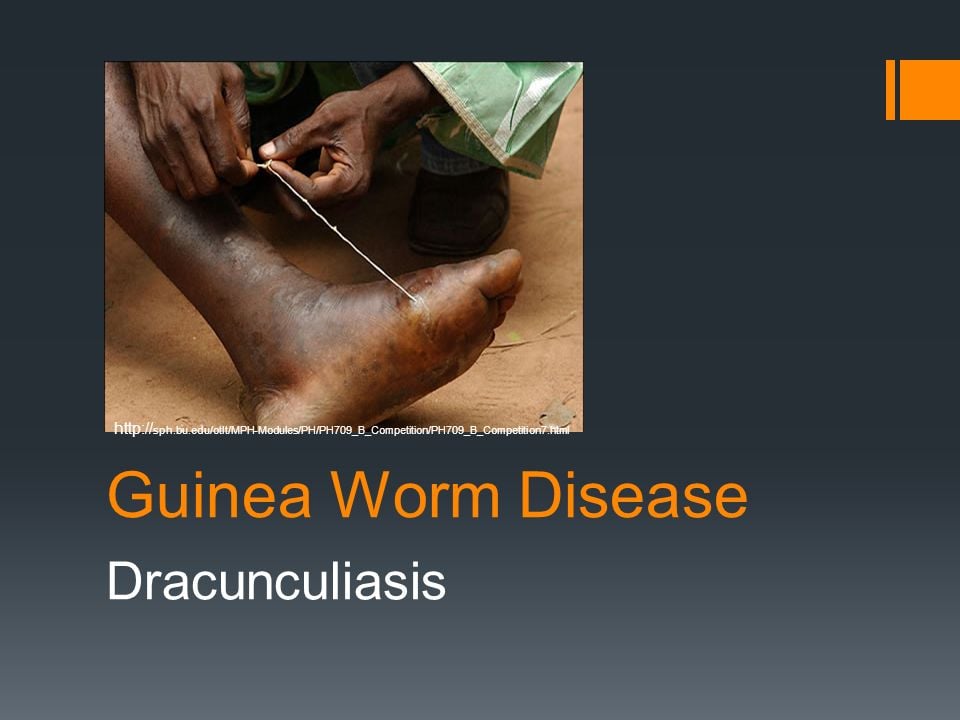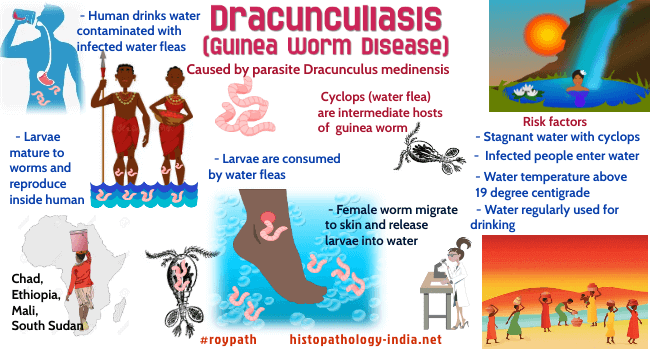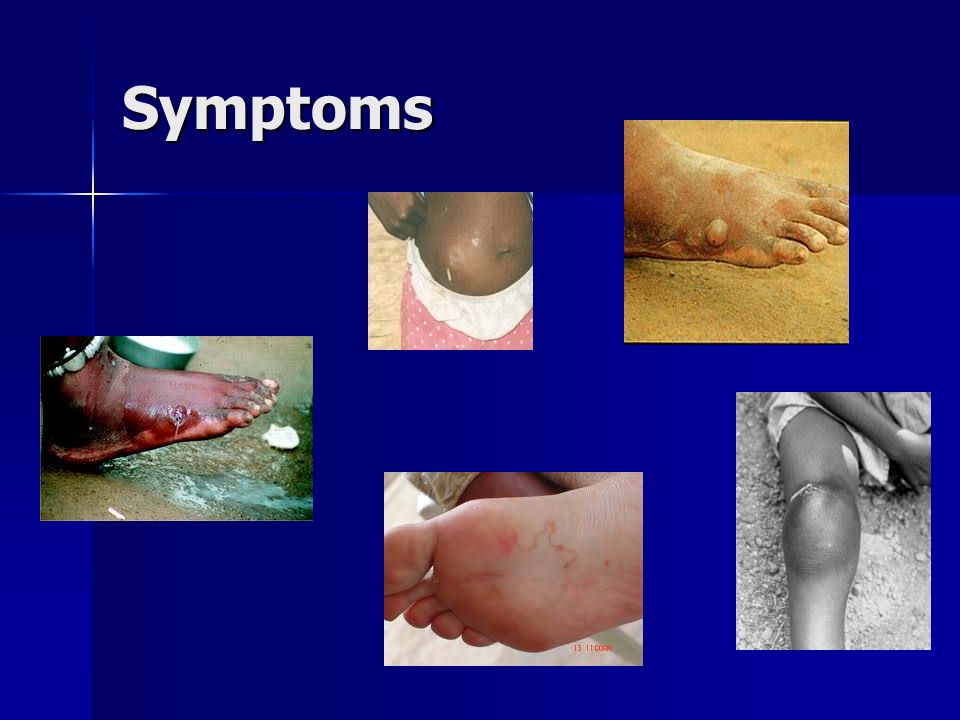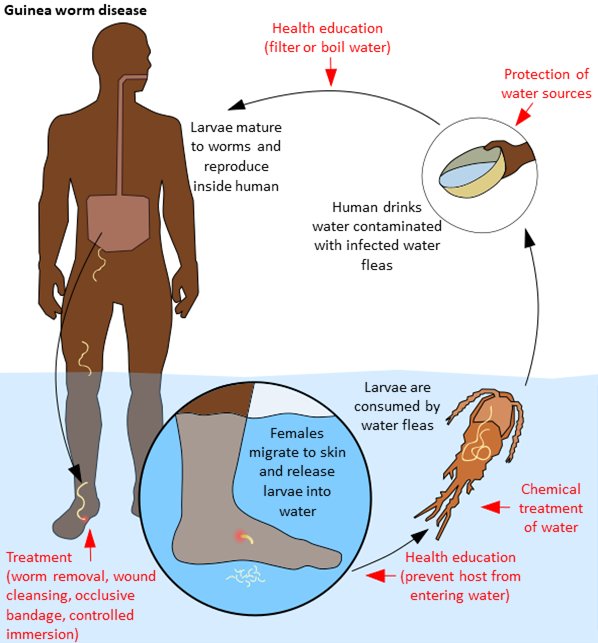Dracunculiasis
Dracunculiasis is an infection caused by the intrusion of a parasitic worm known as the “Dracunculus medinensis“. The dracunculus is the Latin interpretation of “little dragon” which led to the name Guinea worm. Therefore, the dracunculus can be referred to as the “Guinea worm disease“. Dracunculiasis has been in existence since the 1980s but it […] Read More
Top Doctors For Dracunculiasis Treatments
Top Hospitals For Dracunculiasis Treatments
Dracunculiasis
Table of contents
What is Dracunculiasis?
Dracunculiasis is an illness caused by the introduction of a parasitic worm, known as “Dracunculus medinensis.” A dracunculus refers to the Latin translation for “little dragon,” leading to the term Guinea worm. Therefore, the dracunculus can be called the “Guinea worm disease.” Dracunculiasis has been present since the 1980s. However, it is now eradicated on all continents, with some cases in Africa. These African countries include Angola, Mali, Ethiopia, and Sudan.
The Guinea worm is the largest parasitic worm that infests humans. The embryos in mature females have a rough estimate of 3 million, which are 0.002 m in diameter and 0.6 to 0.8m in height. The male searches for the female, and they mate after 100 days, whereby the male stuck in the tissues dies, and the female migrates through the body and releases her larvae. The effects of the infection start after a full year of infestation where the female worm comes out through the feet, excreting a vast amount of larvae and then recycling the life span.
Dracunculiasis might be persistent yet rare, though complete eradication of this infection will lead to a loss in one of the foundational backbones of the profession, medicine. Consumption of contaminated water infested with fleas obtained from wells or ponds is responsible for the infestation and growth of the organism. This organism goes into the stomach, where dissolution takes place with the aid of the gastric acid present in the stomach, thereby releasing the larvae that go through the walls of the intestine. The maturation occurs in the abdominal cavity, where it grows into an adult.

Causes

The causative agent of dracunculiasis is known as the Dracunculus medinensis.
The mode of transmission of dracunculiasis is stagnant water consumption infested with water fleas released by the guinea worm, which results in the ingestion of the dracunculus larvae. The water flea consists of an organism known as the cyclops, thereby being the causative organism.
When the water containing the water fleas enter the system where the larvae hatch in the small intestine or digestive tract and then pass through the mucosa for mating after the gastric acid in the stomach exterminates copepods.
The hatched larvae, after mating, migrate into the abdominal cavity, where the female survives and matures for 60 to 90 days after infestation. This maturation stage can last up to a year before noticing any possible symptoms.
When the adult female completes maturation, it moves gently to the subcutaneous tissues resulting in severe pains while emerging the skin, ulcers, and blisters.
The life cycle of the guinea worm is recycled when it comes in contact with water when coming out of the body and then releases the larvae. The larvae must find a host, primarily humans, within three days. If not, they die. Then, two weeks after finding a host, they start an infection in the copepod. Therefore, dracunculiasis most commonly affects young adults (working population).
Symptoms

Due to the growth and maturation stages, the symptoms are not noticeable for about 12 months. However, the first sign is the intense pain experienced in the abdominal cavity before being accompanied by illness.
The symptoms indicating the presence of the dracunculus are listed below:
- Nausea.
- Constant vomiting.
- Rashes on the skin.
- Dizziness.
- Fever.
- Diarrhea.
- Blister.
The blister is the most common means of identifying the dracunculus, and it is more frequent in the lower part of the body. A burning sensation is felt around the blister, and the size grows over time before erupting, revealing the guinea worm.
The symptoms can be relieved a little by placing the blistered region in cool water, where the worm releases its larvae into the water.
How is Dracunculiasis diagnosed?
- History of the patient- Diagnosis of dracunculiasis mainly depends on the patient’s history. Whenever a patient approaches the doctor, the doctor examines the patient thoroughly. The doctor will take the complete history of the patient, regarding their travel history or residence in the endemic area, regarding their history of ingestion of unfiltered or untreated water or ingestion of fresh fruits and vegetables.
- Physical examination- During the physical examination, the doctor will look for any signs of abnormalities such as blister formation in the epidermis layer at a site chosen by a female worm, any signs of allergic symptoms, swelling or pain, or pruritus in the infected area.
- Laboratory tests- They include complete blood count, where there is an increase in WBC count.
- Serum immunoglobulins level- immunoglobulins such as IgE, IgG1, and IgG4 levels are usually elevated.
- Radiological evaluation- A radiological examination of the lower extremity will help in the identification of calcified worms in rare cases when surgery is needed. It may also be helpful in identifying incidental infection of dracunculiasis whenever a patient complains of lower extremity pain.
- Definitive diagnosis- The definitive diagnosis of the guinea worm is made when the head of the worm is identified within the ulcer.
How is Dracunculiasis treated?

Currently, dracunculiasis cannot be treated specifically, and without treatments, the infections can grow into secondary infections such as amputations and disabilities. On a normal basis, the first action to be taken when a guinea worm is sited is to submerge the infected region into cool water to remove the guinea worm’s discharge of larvae into the water. This eases the pain and infection before searching for an area with no feasible water source to discard the water into which the patient was submerged.
Dracunculiasis is not a severe case. The symptoms are eased, including the burning sensation experienced initially, and giving access to the successful elimination of the guinea worm from the affected region. The process of extracting the guinea worm can be done by using a small stick or preferably a gauze to wrap the worm around it slowly. The extraction process takes weeks to achieve, and this is done by massaging the region around the blister to push the guinea worm out gently. Infections that are spotted before the ulcer forms can be removed with the aid of surgery by a well-trained surgeon. Untreated dracunculiasis can lead to a secondary infection like tetanus and can be life-threatening. Analgesics such as ibuprofen or aspirin are used to subdue swelling and pain, while antibiotic ointments help prevent those secondary infections.
What are the complications associated with Dracunculiasis?
Extracting the guinea worm takes a period, and it is painful. In addition, improper care can lead to bacterial infection, causing complications like:
- Sepsis
- Tetanus.
- Boils.
- Swelling of skin.
- Red patches on the skin.
- Possibly arthritis.
- Breakage of guinea is detrimental as it can lead to inflammation and the remnant of the worm’s body decomposes inside the body. The pains aggravate if it is associated with the swelling.
Can Dracunculiasis be prevented?
Due to the nature of the infection, dracunculiasis cannot be specifically prevented but managed. Also, there are no vaccines to control the spread, but strategies are implemented to curb the spread of the infection. These strategies are listed below:
- Properly caring for an infected region to exterminate all the infections and larvae to prevent transmission from the guinea worm and bandaging to expel the worm from the body.
- It is advisable to filter any water from an open source before consumption.
- Proper education on health should be promoted.
- Carefully monitoring the epidemiology for the cases every 24 hours to prevent the spread of the water flea.
- Providing access to treated water to avoid infections.
- A vector control method should be employed to manage the water infection. Larvicide temephos can be used to achieve this.
- Infected people should be prevented from entering the water to control contamination.
What is the Mortality Rate of Dracunculiasis?
Dracunculiasis is not a fatal infection that could lead to death; therefore, the mortality is low. However, when it is untreated and becomes a secondary infection, it is life-threatening and can lead to more fatalities.
FAQ
If a worm breaks while removing it from the affected area, it can result in severe inflammation of the affected region prompting more pain and swelling.
The female worm can last for a year while maturating, but the male worm dies shortly after mating.
According to the statistics, dracunculiasis is almost eradicated, with just a few cases present, mainly in Africa.
The causative agent of dracunculiasis is the dracunculus medinensis which is a parasite
The process is long as it can take several weeks after massaging for the worm to be visible and carefully removed.
The most common medications used to treat dracunculiasis are metronidazole and thiabendazole (used only for adults).
Humans are the principal definitive hosts for dracunculiasis, while cyclops are the intermediate hosts.



























































































